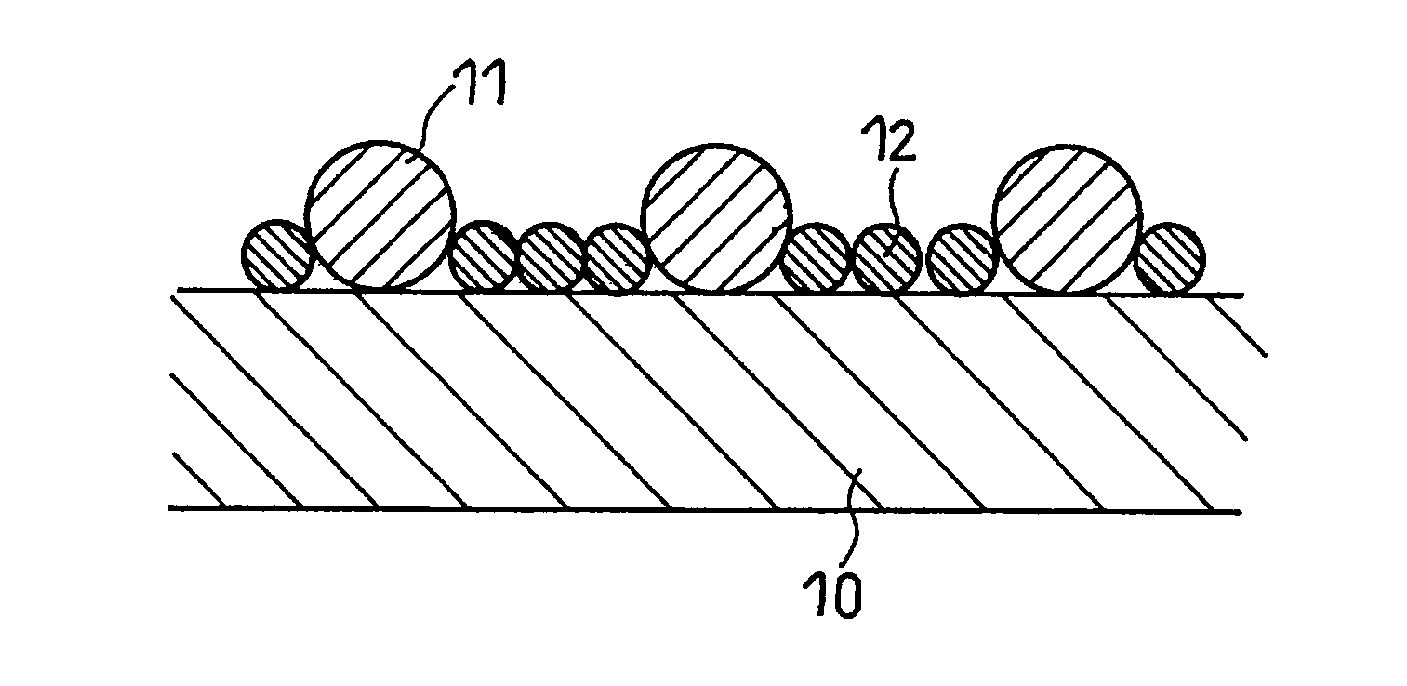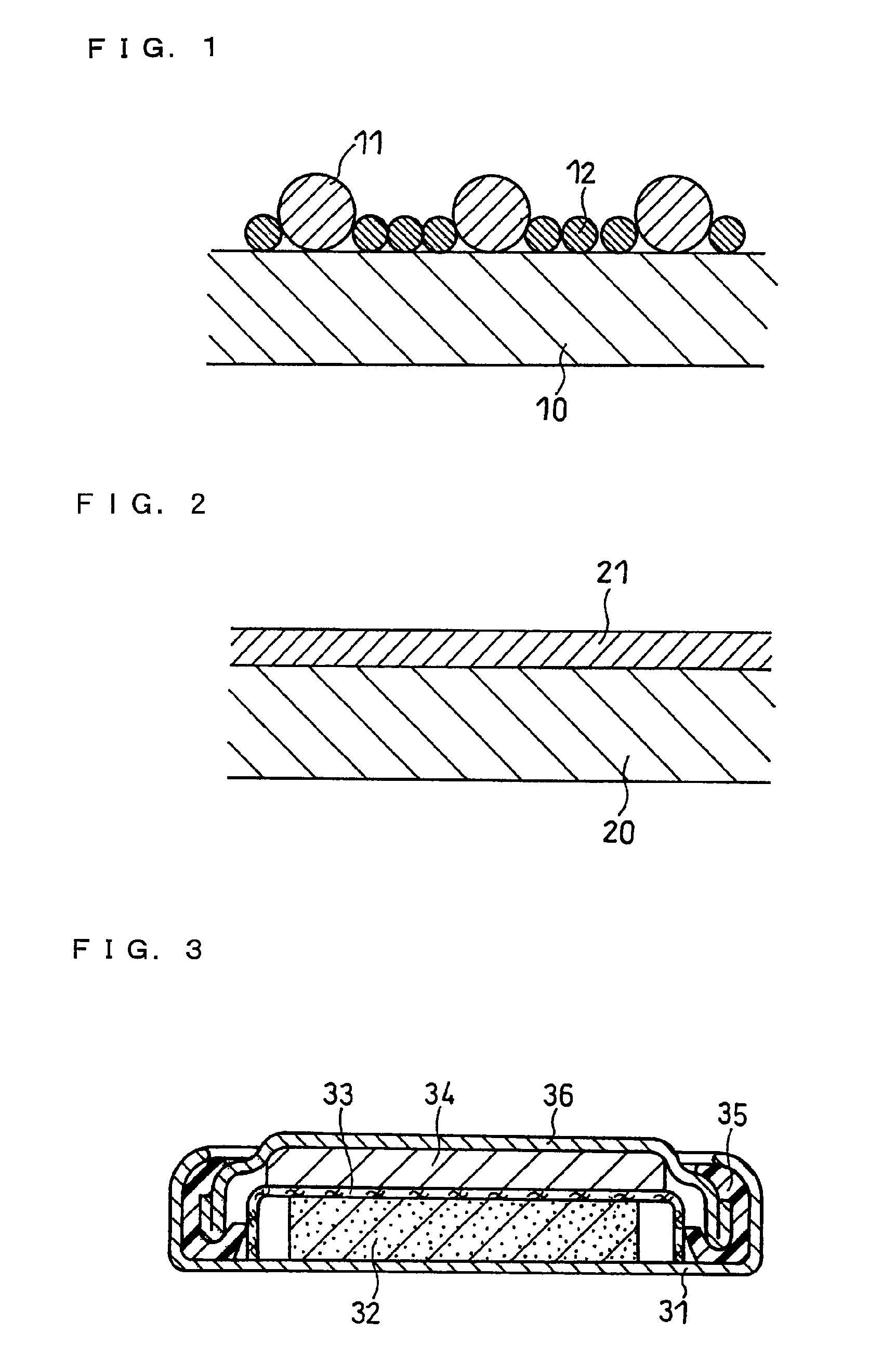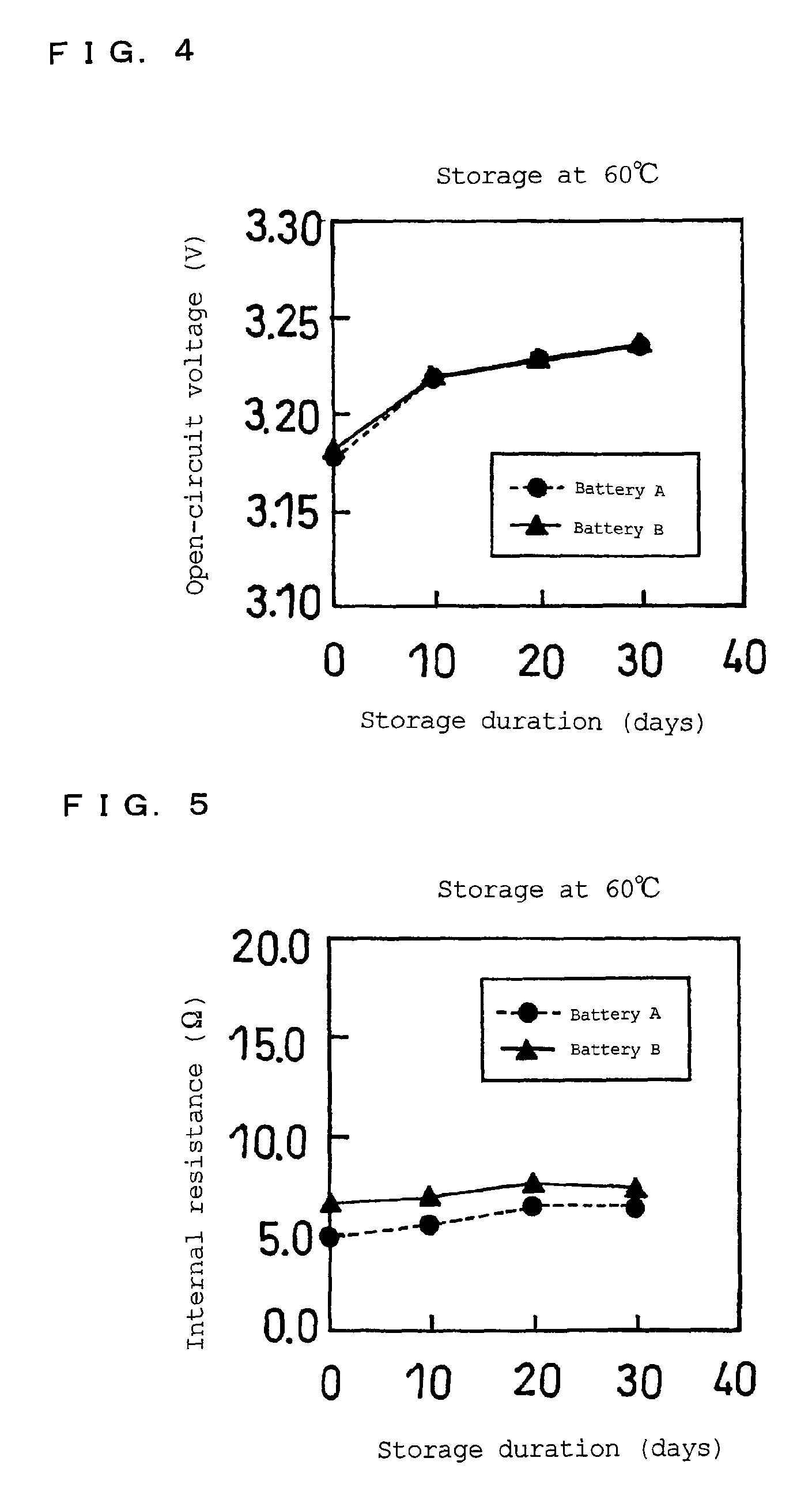Material for contact components or battery components, and battery using the same
a technology of contact components and battery components, which is applied in the direction of cell components, liquid/solution decomposition chemical coatings, non-aqueous electrolyte cells, etc., can solve the problems of increasing equipment costs, labor costs, energy consumption, and the like, and achieves low cost, stable effect, and low surface resistance valu
- Summary
- Abstract
- Description
- Claims
- Application Information
AI Technical Summary
Benefits of technology
Problems solved by technology
Method used
Image
Examples
example 1
(i) Metal Sheet
[0073]On the premise that Fe, as a first metal element, was eluted into the treatment solution, a stainless steel plate (SUS430) was used for a metal sheet. A cathodic electrolytic degreasing of the stainless steel plate was performed, and subsequently, pretreatment was performed, in which the stainless steel plate was immersed in a hydrochloric acid aqueous solution (HCl concentration of 35 wt %, pH 1 or less) of 30° C. for 1 minute. Meanwhile, for the “Hydrochloric Acid Immersion” column in Tables 1 to 2, a “◯” is indicated for the case where immersion using hydrochloric acid aqueous solution was performed, and a “×” for the case where the immersion was not performed.
(ii) Preparation of Treatment Solution
[0074]Treatment solutions having various compositions, as shown in Tables 1 to 2, were prepared.
[0075]For a water-soluble metal salt containing a second metal element, indium sulfate, silver nitrate, palladium chloride, and chlorauric acid were used alone, or by com...
example 2
[0087]A coin-type lithium primary battery, having a structure as shown in FIG. 3, was fabricated by using the positive electrode case fabricated in Examples 1-8.
(i) Fabrication of Positive Electrode
[0088]A positive electrode was fabricated, similar to the one fabricated at the time of determining the initial contact resistance value. That is, to 100 parts by weight of manganese dioxide, were added 5 parts by weight of Ketjen Black as a conductive material and 5 parts by weight of polytetrafluoroethylene (PTFE) as a binder, and then sufficiently mixed to obtain a positive electrode mixture. This positive electrode mixture was formed into a disc shape having a diameter of 20 mm and a thickness of 3.0 mm, then dried at 250° C., and the resultant was referred as the positive electrode.
(ii) Fabrication of Negative Electrode
[0089]A disc shape having a diameter of 20 mm was punched out of a metallic lithium having a thickness of 1.0 mm, and this was used as a negative electrode.
(iii) Prepa...
PUM
| Property | Measurement | Unit |
|---|---|---|
| humidity | aaaaa | aaaaa |
| temperature | aaaaa | aaaaa |
| humidity | aaaaa | aaaaa |
Abstract
Description
Claims
Application Information
 Login to View More
Login to View More - R&D
- Intellectual Property
- Life Sciences
- Materials
- Tech Scout
- Unparalleled Data Quality
- Higher Quality Content
- 60% Fewer Hallucinations
Browse by: Latest US Patents, China's latest patents, Technical Efficacy Thesaurus, Application Domain, Technology Topic, Popular Technical Reports.
© 2025 PatSnap. All rights reserved.Legal|Privacy policy|Modern Slavery Act Transparency Statement|Sitemap|About US| Contact US: help@patsnap.com



